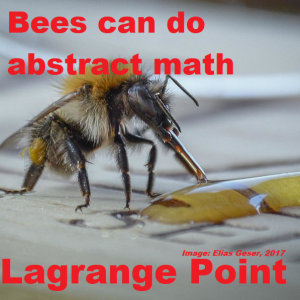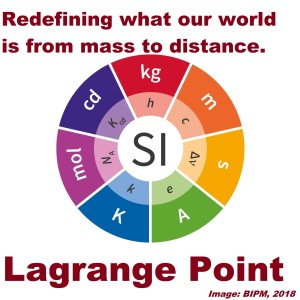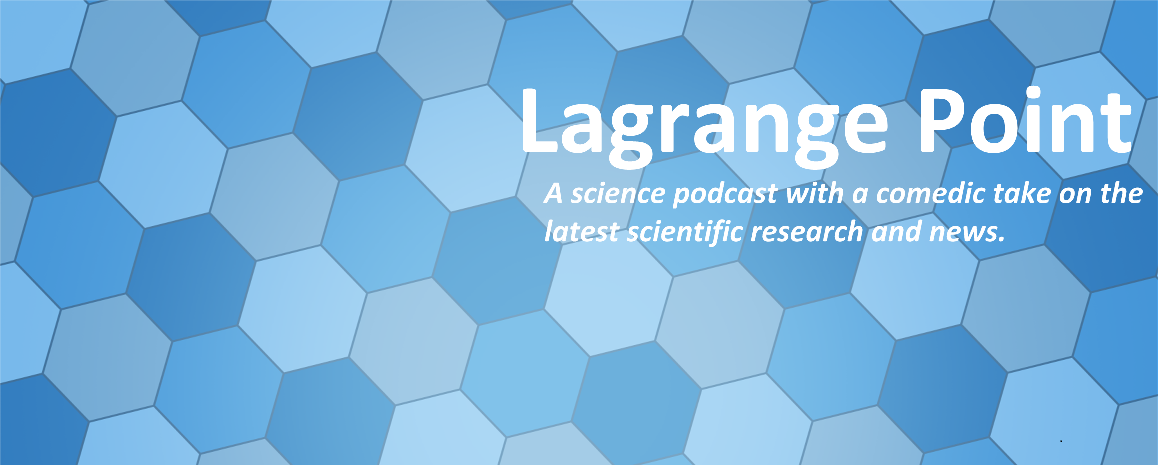Episodes

Monday Sep 20, 2021
Episode 449 - Ig nobel ‘21 Part 2- Weaving and colliding in crowds
Monday Sep 20, 2021
Monday Sep 20, 2021
We celebrate the greatest scientific awards night, the 31st Ig Nobel Prizes. In this multi part special we find out about the history of the Ig Nobel prizes and some of the more well known examples from storied history. Who came home with the top prize this year in the Ig Nobel's? How can you navigate a crowd safely? What's the best way to model a busy train station? Does using a phone make it harder to navigate a crowd safely? Do people coordinate and work together to make through a rush hour crowd? Does a crowd self organise into lanes to navigate a busy intersection?
References:
- “Physics-based modeling and data representation of pairwise interactions among pedestrians,” Alessandro Corbetta, Jasper A. Meeusen, Chung-min Lee, Roberto Benzi, and Federico Toschi, Physical Review E, vol. 98, no. 062310, 2018.
WHO TOOK PART IN THE CEREMONY: Alessandro Corbetta, Jasper Meeusen, Chung-min Lee, Roberto Benzi,, Federico Toschi - “Mutual Anticipation Can Contribute to Self-Organization in Human Crowds,” Hisashi Murakami, Claudio Feliciani, Yuta Nishiyama, and Katsuhiro Nishinari, Science Advances, vol. 7, no. 12, 2021, p. eabe7758.

Monday Nov 30, 2020
Episode 407 - Random generating DNA and random mouse movements
Monday Nov 30, 2020
Monday Nov 30, 2020
Random numbers are incredibly important for our digital economy, so how do we generate them? What is the best way to make a random number: roll a dice, lava lamp, guess, DNA? What connects lava lamps, e-commerce and synthetic DNA? How can we better generate random numbers using synthesized DNA. How do your mouse movements reveal about your decision making process. Do mouse movements help us identify risk takers or keen deliberators. Whether you know it or not, your mouse moving may be part of your decision making process.
- Linda C. Meiser, Julian Koch, Philipp L. Antkowiak, Wendelin J. Stark, Reinhard Heckel, Robert N. Grass. DNA synthesis for true random number generation. Nature Communications, 2020; 11 (1) DOI: 10.1038/s41467-020-19757-y
- Paul E. Stillman, Ian Krajbich, and Melissa J. Ferguson. Using dynamic monitoring of choices to predict and understand risk preferences. PNAS, 2020 DOI: 10.1073/pnas.2010056117

Monday May 27, 2019
Episode 328 - Mathematics and Nature, from Bees to Choruses of Frogs
Monday May 27, 2019
Monday May 27, 2019
Mathematics is not just something humans can perform. It's present across the universe and especially in nature. So can animals understand abstract mathematical concepts? Can we learn from the different complicated algorithms and mathematical models used by animals to improve the internet of things? What can social media help tell us about both human and animal tourists to nature reserves?
References:
- Scarlett R. Howard, Aurore Avarguès-Weber, Jair E. Garcia, Andrew D. Greentree, Adrian G. Dyer. Numerical cognition in honeybees enables addition and subtraction. Science Advances, 2019; 5 (2): eaav0961 DOI: 10.1126/sciadv.aav0961
- Ikkyu Aihara , Daichi Kominami , Yasuharu Hirano and Masayuki Murata. Mathematical modelling and application of frog choruses as an autonomous distributed communication system. Royal Society Open Science, 2019 DOI: 10.1098/rsos.181117
- Anna Hausmann, Tuuli Toivonen, Christoph Fink, Vuokko Heikinheimo, Henrikki Tenkanen, Stuart H.M. Butchart, Thomas M. Brooks, Enrico Di Minin. Assessing global popularity and threats to Important Bird and Biodiversity Areas using social media data. Science of The Total Environment, 2019; DOI: 10.1016/j.scitotenv.2019.05.268

Monday Nov 05, 2018
Episode 299 - Redefining the kilogram a history of measurement
Monday Nov 05, 2018
Monday Nov 05, 2018
Have you ever stopped to wonder what ruler rules them all? How we set the standard for height, for weight, for everything around us? What if you weighed one thing one day, and travelled to another country and suddenly gained 5 kgs or had to use an entirely different weight system? What if you weighed one thing this week and more the next? This week we find out the history measurement systems, how we've standardised them and come up with unique and repeatable measures that don't rely on artefacts (real and metaphorically).
References:
- Suplee, C., Lauren Lee, J., Gillespie, A., Porter, G., Stein, B., & Phillips, B. et al. (2018). A Turning Point for Humanity: Redefining the World’s Measurement System. Retrieved from https://www.nist.gov/si-redefinition/turning-point-humanity-redefining-worlds-measurement-system
- Jabbour, Z., & Yaniv, S. (2001). The kilogram and measurements of mass and force. Journal of Research of the National Institute of Standards and Technology, 106(1), 25. doi:10.6028/jres.106.003
- Newell, D. B. (2014). A more fundamental International System of Units. Physics Today, 67(7), 35-41. doi:10.1063/pt.3.2448
- Bureau International des Poids et Mesures. (n.d.). On the future revision of the SI. Retrieved from https://www.bipm.org/en/measurement-units/rev-si/

Monday Aug 06, 2018
Monday Aug 06, 2018
The Fields Medals for 2018 have been announced, and Australian Mathematician, Professor Akshay Venkatesh was announced as one of the four recipients. Mathematics can seem like a group of different and diverse subjects, but Professor Venkatesh's work tied different areas of mathematics together to use one toolkit to solve problems in another area. We dive deep into the complex world of mathematics and look at the Fields Medals 2018.
References:
- Slezak, M. (2018). This Aussie genius has won the 'Nobel Prize of mathematics'. [online] ABC News. Available at: http://www.abc.net.au/news/2018-08-02/fields-medal-aussie-genius-akshay-venkatesh-mathematics-prize/10062218 [Accessed 4 Aug. 2018].
- Jackson, A. (2018). [online] Mathunion.org. Available at: https://www.mathunion.org/fileadmin/IMU/Prizes/Fields/2018/venkatesh-final.pdf [Accessed 4 Aug. 2018].

